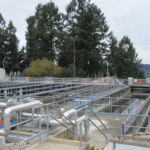There’s something grounding about turning on the tap, filling a glass, and trusting what flows into it. Clean water feels so ordinary, yet it’s one of those everyday luxuries we often forget isn’t guaranteed. For people living in places like Selwyn, where many homes still rely on private wells or smaller community systems, keeping drinking water safe is not just about taste—it’s about health, peace of mind, and knowing your family is protected.
The hidden risks beneath clear water
Most of us assume that if water looks clear, it must be safe. But water isn’t always that honest. Microorganisms like E. coli, coliform bacteria, and even parasites can live in well water without changing the smell or color. That’s what makes them tricky—and dangerous. Even a minor contamination can lead to stomach upset or more serious illnesses, particularly in children or anyone with a weaker immune system.
This is why regular bacteria water testing Selwyn homeowners rely on has become an essential part of responsible well ownership. It’s not about paranoia—it’s about being proactive. A small test can catch issues before they escalate, and frankly, it’s a lot cheaper than dealing with medical bills or replacing entire plumbing systems after an unnoticed contamination festers.
Why Selwyn’s geography makes testing important
Selwyn, with its mix of rural properties, seasonal cottages, and newer developments, has a unique relationship with water. Wells here often tap into aquifers that run close to farmland, forests, or even older septic systems. That closeness can sometimes invite bacteria or nitrates into the water table. Heavy rains, flooding, or even construction nearby can stir things up underground and allow contaminants to sneak into a well.
Testing at least once or twice a year is recommended. Think of it like a health checkup for your water—simple, routine, and often the only way to uncover what the eye can’t see.
What happens when testing reveals bacteria
So, let’s say a test comes back showing coliform bacteria. It doesn’t always mean the water is dangerous, but it does mean something is off—like a cracked well cap, surface runoff leaking in, or maybe just an aging system that needs attention. If E. coli is present, however, that’s a more urgent red flag since it points to potential fecal contamination.
The first step is usually shock chlorination, a temporary disinfectant flush. But relying only on that can feel like playing whack-a-mole. Once bacteria find a way in, it’s likely they’ll try again. That’s where permanent solutions come into play.
The role of UV purification
Among the most reliable long-term fixes is installing a UV water purifier for bacteria. Unlike chemical treatments, which can leave residues or change the taste of water, UV systems use ultraviolet light to neutralize microorganisms instantly as the water passes through. There’s no chemical aftertaste, no lingering byproducts—just safe, clear water.
They’ve become particularly popular in rural areas because they require relatively little maintenance compared to constant chemical treatments. Replace the UV bulb once a year, keep the sleeve clean, and you’re set. It’s almost like having a silent guard standing at the final point before water reaches your tap.
Other disinfection systems to consider
Of course, UV isn’t the only option. Some households, especially those dealing with recurring or multi-source contamination, invest in a broader water disinfectant system that may combine filtration, chlorination, or even advanced oxidation processes. These systems can be more complex and pricier, but they offer layered protection—especially valuable for larger families, small businesses, or rental cottages that see heavy seasonal use.
Each property is different, so the best choice depends on water quality, usage habits, and budget. For some, UV alone is perfect. For others, pairing it with a sediment filter or a low-dose chlorine injection system makes more sense.
What you can do right now
If you’re living in Selwyn and haven’t tested your water recently, now’s the time. Tests are inexpensive and often available through local labs, health units, or water treatment companies. In fact, many homeowners keep a schedule: spring testing after the thaw and fall testing before winter sets in. It’s a rhythm that fits well with seasonal changes and ensures water safety year-round.
And don’t stop at testing. Walk out to your wellhead once in a while. Check if the cap is secure, the surrounding ground slopes away properly, and there’s no pooling water nearby. A little backyard observation can prevent bacteria from ever getting a foothold.
Peace of mind in every glass
At the end of the day, safe water is more than a health measure—it’s a lifestyle foundation. The confidence of pouring a glass for your child without worry, making coffee in the morning without hesitation, or welcoming guests knowing your taps are trustworthy—that’s real peace of mind.



